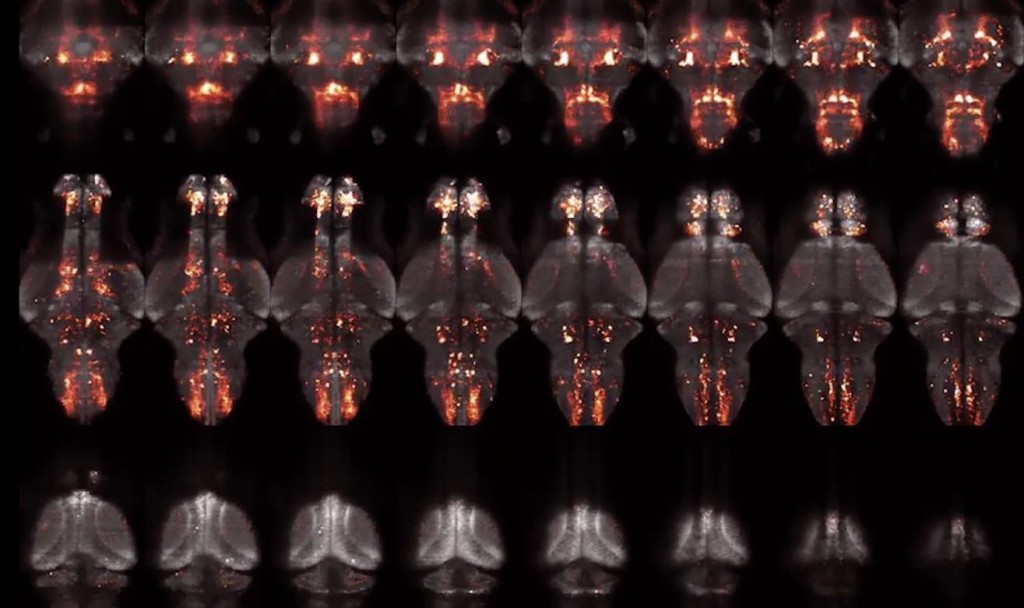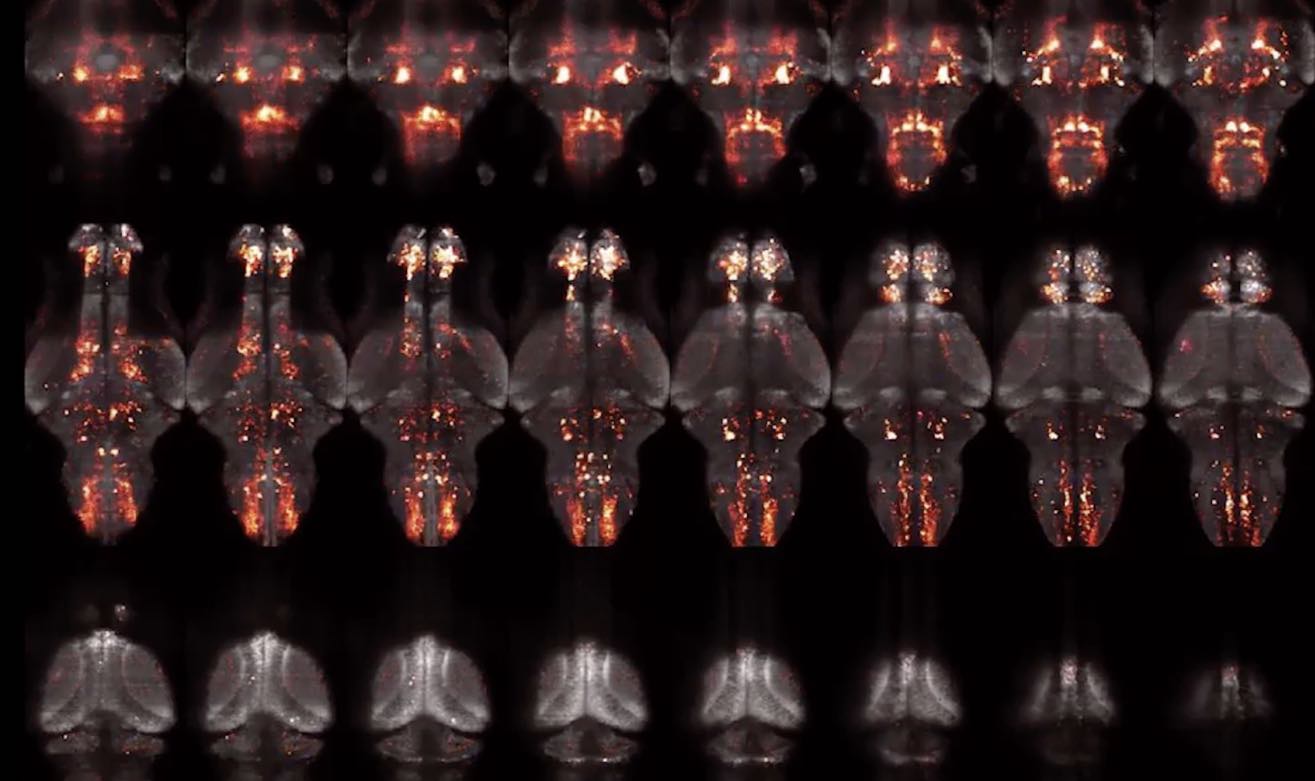
Lost fish find their way home thanks to how their brains are wired, according to new research.
The neuronal circuit evolved up to half a billion years ago—and could have been passed onto humans.
It enables our slippery ancestors to get back on course, even after being swept away by fast flowing currents.
The discovery sheds fresh light on the workings of the ancient brain and may apply to other vertebrate, including us.
Co-author Dr. Misha Ahrens, of Howard Hughes Medical Institute in Maryland, said this navigational circuit is quite unknown.
“We think it might underlie higher order hippocampal circuits for exploration and landmark-based navigation.”
The study published in Cell is based on the humble zebrafish—long used in medical research as a model for humans—and found the key chemical pathways crossing different regions at the back of the brain that help the animals regain their bearings.
In experiments the tiny translucent fish traversed a 2D virtual reality environment in the presence of a simulated flow. As they swam toward a target, strong water unexpectedly pushed them off course. They still swam back to where they started, determined to finish the journey.
First author Dr. En Yang and colleagues used a ‘whole imaging’ technique developed at their lab to measure what is happening. It allowed scientists to search the fish’s entire brain to see which circuits are activated during course-correcting—and disentangle the individual components involved.
RELATED: Myth Busted: Goldfish Have Great Memories and Are Even Used as a Model Species of Fish Cognition
Scans showed the hindbrain—a conserved area at the rear—computes their spot. They use the information to figure out where to go next.
Researchers expected to see cells triggered in the forebrain where the hippocampus is, which contains a ‘cognitive map’ of an animal’s environment.
To their surprise, they saw activation in several regions of the medulla. Information was being transmitted from a newly identified circuit. It passed through a hindbrain structure called the inferior olive to the motor circuits in the cerebellum that enable the fish to move.
When these pathways were blocked, fish were unable to navigate back to their original location.
The findings suggest areas of the brainstem remember a zebrafish’s original location and generate an error signal based on its current and past locations.
LOOK: Diver Gets Glorious Glimpse of Giant Sea Worm That Normally Only Comes Out at Night
This is relayed to the cerebellum, allowing the fish to swim back to its starting point. It reveals a new function for the inferior olive and the cerebellum, which was previously known to be involved in actions like reaching and locomotion, but not this type of navigation.
“We found the fish is trying to calculate the difference between its current location and its preferred location and uses this difference to generate an error signal,” said Dr. Yang.
“The brain sends that error signal to its motor control centers so the fish can correct after being moved by flow unintentionally, even many seconds later.”
It is still unclear whether these same networks are involved in similar behavior in other animals.
RELATED: Predators Have a Soft Side: Grey Reef Sharks Found To Form Long-Lasting ‘Friendships’ Says Study
But the researchers hope labs studying mammals will now start looking at the hindbrain for comparable circuits used for navigation.
This hindbrain network could also be the basis of other navigational skills, such as when a fish swims to a specific place for shelter, added Ahrens, who believes the research could lead to better understanding of dementia.




















